It’s probably safe to assume that most readers of this magazine are well aware that firewood needs to be reasonably dry before it’s burned, and that it’s a pain to move, so you’d better have a system for it. Our readers are not the ones calling the firewood dealer in November to get that winter’s load of green wood dropped in the middle of the driveway, then parking on the street, covering the unstacked mound of wood with a blue tarp, and calling it good.
And yet – let’s not be smug about it – even though we know what we should be doing, many of us have less than perfect technique. Or put differently, we’re constantly refining our less than perfect techniques because perfection is impossible to achieve. Yes, we should be seasoning our stacked wood in full sun with good air circulation for at least a year before it’s burned, but we often get behind on it, or far ahead enough that the wood starts to degrade. Some of us don’t have full sun anywhere in the yard, so that rule goes out the window. Many of us have domestic partners who aren’t keen on skidders and log-length firewood parked beside the side door, and so we process and stack away from the house against our better judgement. We know it’ll be a schlep, but it’s either that or alimony.
And so I thought I’d share the way I do things, not because I have it figured out, but just because this is what works for me, at this moment, with my current set up. It will inevitably change as circumstances change. The hope is that others will read this and then share their firewood management set ups, and other readers can cherry pick some techniques they find inspiring.
My process starts on a firewood landing that’s about 300 feet from the house. I harvest and skid my own wood, so in choosing the site I made sure there was enough room to drop hitches of logs and still turn around. I also made sure it was accessible to a log truck, as there could be unforeseen events in the future that would necessitate log-length delivery. This will all sound obvious to some, but it’s taken me years to have this clarity. I’ve spent much of my life as a kind of wood squirrel, which is to say someone with little caches all over southern Vermont. A friend would cut a tree down and I’d haul it away. A logger had ends on a landing and I’d go up and scrounge. A tree would fall in the forest and I’d drive to it, buck it, and haul away the bolts. I’m so done with this. I’ve ruined my back and truck’s suspension enough that I’m enforcing discipline, promising myself that from now on I’m only going to cut log-length wood on this landing. I might actually stick to it.
Anyway, I buck and split the wood there, then stack the wood a few steps away in a long, single-row pile that curves. The curve is because until very recently I didn’t live right next to the woodlot, and so I had to haul the wood two-cords-at-a-time in a borrowed dump-body truck. A curved pile gave me more area from which to draw from as I pitched wood manually into the dump body. Old habits die hard. The curve also allows me to separate my wood. In the north/south section I stack odd-lengths and low-btu species for the shoulder seasons, including pine this year that was left over from a sawmilling job. The east/west section and the curve is high-btu species.
I cover the pile with wide pine slabs, which is not a perfect cover but is good enough considering this isn’t the pile’s final destination. And my roofing tin is all currently employed covering lumber, so you use what you have.
I let the wood season for a year on this landing. I then schlep it to a covered area beside my living room in the spring, so it can finish curing under full cover. The space by the house is big enough to hold three cords. In past houses I’ve lived in I always stacked the near-the-house wood in double-width rows and covered with old roofing tin, which worked but required constant maintenance. Having the permanent roof is a luxury. You’ll notice there’s a cool little wood box, too, which allows me to get wood into the living room without having to carry it through the door. This cleverness is courtesy of the late Henry Fairfax Ayres, a man about whom I’ll tell you more in a blog I’ll file this coming sugaring season.
So that’s my system. Some of you reading this have your own cleverness, including stacking techniques, covering techniques, wood-crib-building techniques that allow you to use a tractor and forks instead of your pickup. Please share with the group, and if you’d like to include a picture, send that to me directly – I’m dave(at)northernwoodlands.org.


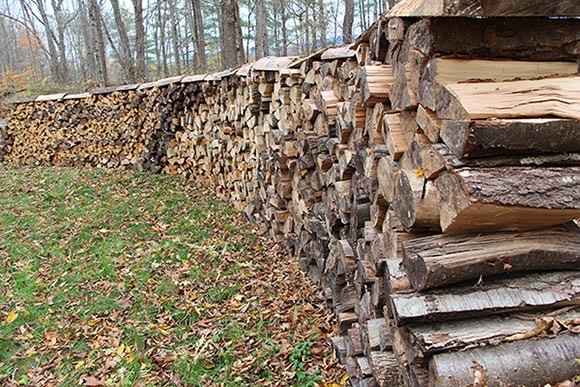
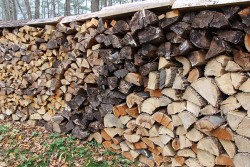
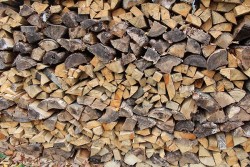
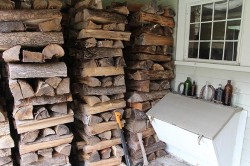
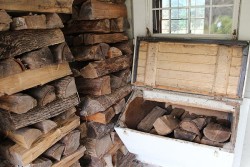
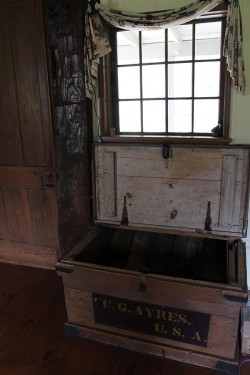
Discussion *